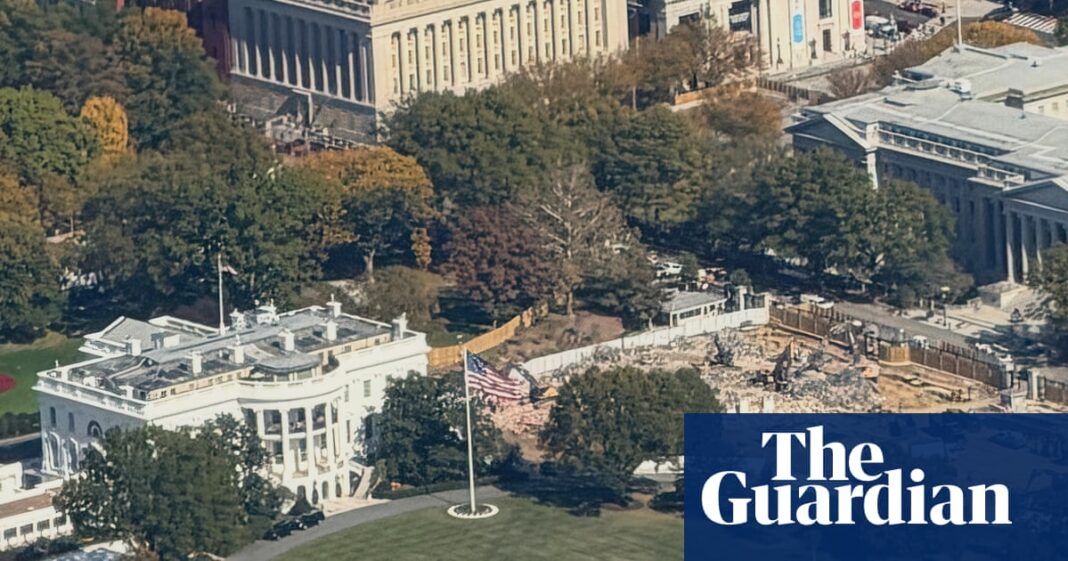The Destruction of the East Wing: A Controversial Move in White House History
On Friday, it was confirmed that the East Wing of the White House has been completely destroyed, just days after construction commenced on a $300 million ballroom. This ambitious project, championed by former President Donald Trump, marks a significant shift in the historical fabric of one of the most recognized buildings in the world. The demolition comes as a stark contrast to Trump’s earlier assurance that existing structures would remain intact during the ballroom’s development.
What Is the East Wing?
Originally referred to as the East Terrace, the East Wing was constructed in 1902 during President Theodore Roosevelt’s administration. However, its present form was established by Franklin Roosevelt in 1942, when the space was expanded to provide additional working space during World War II. This modification also served the dual purpose of concealing an underground bunker, designed for the president and staff in case of emergencies.
Over the years, the East Wing evolved into a hub for the First Lady and her staff, and it became home to the Jacqueline Kennedy Garden—a serene space cherished by visitors and White House residents alike. Situated directly across East Executive Avenue from the Treasury Department, the East Wing played a significant role in hosting social events, allowing guests easy access for mingling.
The Ballroom Project
The newly proposed ballroom would have originally spared the East Wing from demolition, serving primarily as a luxurious gathering area where guests could socialize before moving to formal dinners in the ballroom itself. However, less than a week after the groundbreaking, the decision was made to raze the entire East Wing, leading to its swift destruction.
Trump has vocally criticized the current East Room, citing its limited capacity of around 200 guests and claiming the White House requires a more expansive entertaining space. The proposed ballroom, measuring 90,000 square feet—nearly double that of the main White House—aims to accommodate up to 999 guests. Early renderings reveal a striking resemblance to the opulent ballroom at Mar-a-Lago, Trump’s private estate in Florida. The White House has expressed its intention for the ballroom to be completed before Trump’s term concludes in January 2029, a timeline that many find ambitious.
Funding and Support
Trump has claimed that construction costs will not burden taxpayers, asserting that the project is being privately funded through donations from “generous Patriots, Great American Companies, and yours truly.” Notable contributors include major tech giants like Apple, Amazon, Meta, Microsoft, and Google, alongside defense and communication firms such as Lockheed Martin and Comcast.
Despite the backing of these corporations, the construction began without obtaining the necessary signoff from the National Capital Planning Commission, the body responsible for overseeing significant renovations to federal buildings in the region.
Reactions to the East Wing’s Demolition
The decision to demolish the East Wing has sparked outrage among White House alumni and historians alike. The images of rubble and destruction at such an iconic site have resonated deeply, even with those who have grown accustomed to the unconventional decisions made during Trump’s administration. David Frum, a former speechwriter for President George W. Bush, articulated a sentiment shared by many: “Something profoundly symbolic about Trump taking a wrecking ball to the White House… treating public assets as private property.”
The National Trust for Historic Preservation has formally requested a pause on the demolition until a review by the planning commission is completed, citing concerns that the new ballroom could overshadow the White House itself. Presidential historian Douglas Brinkley described the demolition as akin to “slashing a Rembrandt painting,” reflecting a deep cultural and historical loss.
In a defense of the project, Trump advisor Stephen Miller characterized the East Wing as merely a “cheaply built add-on structure” in dire need of renovation and repair.
Historical Context: White House Renovations
Presidents have altered the White House since its inception in 1792, often for pragmatic reasons. Trump’s decision to build a ballroom is being defended as part of this tradition.
Thomas Jefferson expanded the White House with the east and west colonnades, while Andrew Jackson added the North Portico. Roosevelt’s own contributions—both Theodore’s West Wing and Franklin’s East Wing—were similar enhancements made to accommodate evolving needs. One of the most notable renovations was initiated by Harry Truman, who undertook a complete gutting of the White House’s interior due to structural issues in the late 1940s, a move that triggered considerable controversy at the time.
While some changes have yielded beautiful new spaces, such as the Rose Garden under John F. Kennedy, others, like Richard Nixon’s conversion of an indoor swimming pool into a press workspace, reflect the continuous need for adaptation within the historic mansion.
As controversy continues to swirl around the demolition and the planned ballroom, the East Wing’s destruction stands as a pivotal moment in modern presidential history—one that challenges the delicate balance between tradition and progress.



